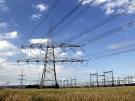Government increases fines for power theft

Government has increased the fine for homeowners and small shopkeepers who “steal electricity” from Shs295, 000 to Shs350, 000.
Persons or entities that illegally tap electricity for commercial use will pay Shs700, 000, up from Shs590, 000.
Industrial consumers, on the other hand, will pay Shs1.4 million, not the Shs1.1 million they are currently fined, should they be convicted of stealing electricity.
The new charges will start applying on January 15, 2015. On top of these fines, those convicted of power theft will also have to pay their “estimated unbilled consumption”.
“In order to discourage power theft and to reduce commercial losses, the [Electricity Regulatory] Authority [ERA] has revised the charges applicable,” Mr Benon Mutambi, the chief executive officer of ERA, said through a January 12 press statement.
Mr Sam Zimbe, Umeme’s general manager of corporate and regulatory affairs, told this newspaper during an interview last year, that each percentage loss that ERA factors in the tariff costs the government $3.5 million (Shs9.5 billion).
And, according to police records, at least 10 people in Bugisu region in the east, are electrocuted weekly as they tap electricity.
The revision comes years after electricity distribution company Umeme Limited urged the government to increase the fines to check power theft.
It remains to be seen how the new charges will impact on power theft given that some stakeholders attribute the power theft to high end–user tariffs, which the government has increased again.
Energy losses have reduced from 27 per cent in 2011, 26 per cent (2012) to 21.6 per cent in 2013.
The agreed regulatory targets for energy losses were 23.5 per cent in 2013, 20.5 per cent (2014) and to 18.6 per cent in 2015.
As of 2013, the commercial losses constituted just seven per cent of the 23.5 percentage losses.
This means the besides increasing the charges, the distribution company will have to invest in technologies that will reduce technical losses.
That could be achieved by on re-conductoring and re-configuring of transformer zones and by investing in load growth and network reliability.
Story By Daily Monitor’s Nelson Wesonga








Comments
This post currently has no comments.